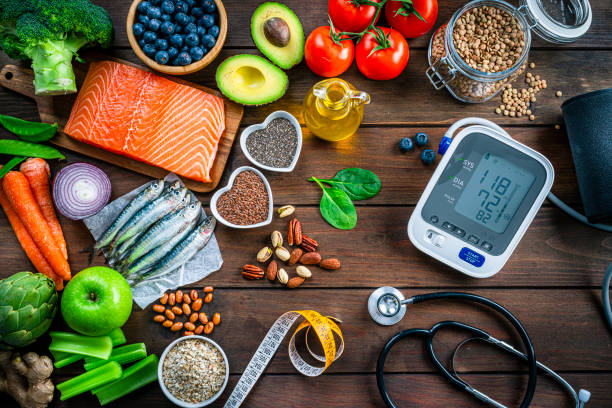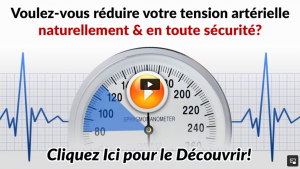What is high blood pressure?
A normal blood pressure reading is less than 120/80 mm Hg. When you have high blood pressure, also known as hypertension, your reading is consistently in a higher range. High blood pressure treatment typically involves a combination of medication and lifestyle changes to help you manage the condition and prevent or delay related health problems. The goal is to get your blood pressure below the high range. If normal is less than 120/80 mm Hg, what’s high? When the systolic blood pressure — the top number — is between 120 and 129, and the diastolic blood pressure — the bottom number — is less than 80, this is considered elevated blood pressure. Elevated blood pressure doesn’t necessarily raise your risk for heart attack or stroke. But without attention, it will often progress to high blood pressure — which definitely does raise your risk. Hypertension (or high blood pressure) is present once the systolic pressure is 130 or higher, or the diastolic pressure is 80 or higher.Lifestyle changes
A healthy lifestyle is the first line of defense against high blood pressure. Habits that help control blood pressure include:- eating a healthy diet
- staying physically active
- maintaining a healthy weight
- avoiding excessive alcohol consumption
- quitting smoking and avoiding secondhand smoke
- managing stress
- eating less salt
- limiting caffeine
- monitoring blood pressure at home
- getting support from family and friends
High blood pressure drugs
Some people find that lifestyle changes alone are enough to control their high blood pressure. But many also take medication to treat their condition. There are many different types of blood pressure medications with different modes of action. If one drug doesn’t lower your blood pressure enough, another might do the job. For some people, a combination of two or more drugs may be needed to keep their blood pressure under control. Hypertension medications can be divided into the categories listed below, based on how they work. The drugs in each section are just a sampling of what’s available.Diuretics
Diuretics, sometimes called water pills, help the kidneys get rid of excess water and salt (sodium). This reduces the volume of blood that needs to pass through the blood vessels. As a result, blood pressure goes down. There are three major types of diuretics defined by how they work. They include:- thiazide diuretics (chlorthalidone, Microzide, Diuril)
- potassium-sparing diuretics (amiloride, Aldactone, Dyrenium)
- loop diuretics (bumetanide, furosemide)
- combination diuretics, which include more than one variety used together
Beta-blockers
Beta-blockers help the heart to beat with less speed and force. The heart pumps less blood through the blood vessels with each beat, so blood pressure decreases. There are many drugs within this classification, including:- atenolol (Tenorim)
- propranolol (Inderal)
- metoprolol tartrate (Lopressor)
- metoprolol succinate (Toprol-XL)
- carvedilol (Coreg)
Alpha-beta-blockers
Alpha-beta-blockers have a combined effect. They’re a subclass of beta-blockers that block the binding of catecholamine hormones to both alpha and beta receptors. They can decrease the constriction of blood vessels like alpha-1 blockers, and slow down the rate and force of the heartbeat like beta-blockers. Carvedilol (Coreg) and abetalol hydrochloride (Normodyne) are comlmon alpha-beta-blockers.Angiotensin converting enzyme (ACE) inhibitors
ACE inhibitors help the body produce less of a hormone called angiotensin II, which causes blood vessels to narrow. These medications decrease blood pressure by helping blood vessels expand and let more blood through. Some ACE inhibitors include:- benazepril hydrochloride (Lotensin)
- captopril (Capoten)
- enalapril maleate (Vasotec)
- fosinopril sodium (Monopril)
- lisinopril (Prinivil, Zestril)
Angiotensin II receptor blockers (ARBs)
ARBs block the action of angiotensin II directly on the blood vessels. It attaches at the receptor site on the blood vessels and keeps them from narrowing. This causes blood pressure to fall. ARBs include:- candesartan (Atacand)
- eprosartan mesylate (Teveten)
- irbesartan (Avapro)
- losartan potassium (Cozaar)
- telmisartan (Micardis)
- valsartan (Diovan)
Calcium channel blockers
Movement of calcium into and out of muscle cells is necessary for all muscle contractions. Calcium channel blockers limit calcium from entering the smooth muscle cells of the heart and blood vessels. This makes the heart beat less forcefully with each beat and helps blood vessels relax. As a result, blood pressure decreases. Examples of these medications include:- amlodipine besylate (Norvasc, Lotrel)
- felodipine (Plendil)
- diltiazem (Cardizem)
- isradipine (DynaCirc, DynaCirc CR)
- verapamil hydrochloride (Calan SR, Covera-HS, Isoptin SR, Verelan)
Alpha-1 blockers
Your body produces types of hormones called catecholamines when under stress, or chronically in some disease states. Catecholamines, such as norepinephrine and epinephrine, cause the heart to beat faster and with more force. They also constrict blood vessels. These effects raise blood pressure when the hormones attach to a receptor. The muscles around some blood vessels have what are known as alpha-1 or alpha adrenergic receptors. When a catecholamine binds to an alpha-1 receptor, the muscle contracts, the blood vessel narrows, and blood pressure rises. Alpha-1 blockers bind to alpha-1 receptors, blocking catecholamines from attaching. This keeps them from narrowing blood vessels so blood is able to flow through the blood vessels more freely, and blood pressure falls. Alpha-1 blockers are primarily used to treat benign prostatic hyperplasia (BPH) in men, but are also used to treat high blood pressure. These drugs include:- doxazosin mesylate (Cardura)
- prazosin hydrochloride (Minipress)
- terazosin hydrochloride (Hytrin)
Alpha-2 receptor agonists (central agonists)
Alpha-2 receptors are different from alpha-1 receptors. When an alpha-2 receptor is activated, the production of norepinephrine is blocked. This decreases the amount of norepinephrine produced. Less norepinephrine means less constriction of blood vessels and a lower blood pressure. Methyldopa (Aldomet) is an example of this type of drug. It’s a common choice for high blood pressure treatment during pregnancy because it generally poses few risks to the mother and fetus. Other examples include:- clonidine hydrochloride (Catapres)
- guanabenz acetate (Wytensin)
- guanfacine hydrochloride (Tenex)
Vasodilators
Vasodilators relax the muscles in the walls of blood vessels, especially small arteries (arterioles). This widens the blood vessels and allows blood to flow through them more easily. Blood pressure falls as a result. Hydralazine hydrochloride (Apresoline) and minoxidil (Loniten) are examples of these.Treatment plans
Treatment for high blood pressure includes ongoing care, as well as individual treatments tailored for specific situations and younger age groups, including children and teens.Ongoing medical care
To make the most of your treatment, it’s vital to get regular medical checkups and blood pressure tests. Regular checkups allow your doctor to monitor how well your treatment is going and make any necessary adjustments to your treatment plan. If your blood pressure starts inching back up, your doctor can respond promptly. Doctor’s visits also give you an opportunity to ask questions and bring up any concerns.Treatment for specific situations
Additional treatment options may be needed in certain situations like resistant hypertension or secondary hypertension. Resistant hypertension refers to blood pressure that remains high after trying at least three different types of blood pressure medication. Someone whose high blood pressure is controlled by taking four different kinds of medication is considered to have resistant hypertension. Even such hard-to-treat cases can often be managed successfully in time. Your doctor might prescribe a different medication, dose, drug combination, or more aggressive lifestyle changes. Getting a referral to a heart or kidney specialist may also be useful in treating resistant hypertension. Secondary hypertension is high blood pressure that’s directly caused by another health condition or drug side effect. Blood pressure often drops substantially or even goes back to normal once doctors diagnose and treat the root cause.Treatment options for children and teens
The first line of treatment for children and teens with high blood pressure is a healthy lifestyle. This includes:- a balanced diet
- regular exercise
- weight loss for those who are overweight or obese
Takeaway
High blood pressure treatment usually involves a combination of lifestyle changes and medication. Sometimes, lifestyle changes are enough to return your blood pressure to normal levels. These changes may include diet, exercise, and weight loss. If your high blood pressure continues, be sure to consult a doctor who can prescribe the appropriate medication.Try to:
- cut your salt intake to less than 6g (0.2oz) a day, which is about a teaspoonful – find out how you can reduce the amount of salt in your diet.
- eat a low-fat, balanced diet – including plenty of fresh fruit and vegetables; get tips on eating more healthily.
- be active – read some tips about getting more exercise.
There are three main classes of medication that are usually in the first line of treatment for hypertension: 1. Calcium Channel Blockers (CCB) 2. Angiotensin Converting Enzyme inhibitors (ACE inhibitors or ACE-I) and Angiotensin Receptor Blockers (ARBs) 3. Diuretics.







